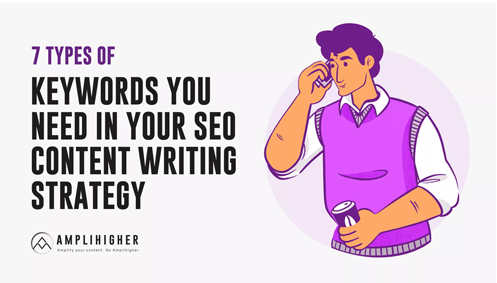Updated August 13, 2024
So you’ve published a brand new piece of content on your website and you’re fervently checking your SERPs to see if you’ve made it to that #1 spot on Google yet.
And you keep checking. And checking. And checking. How long is this going to take? Why aren’t you in the top results yet? Why hasn’t Google recognized the value of your content? Why are they playing games with you like this?
There’s no predetermined time it takes for your new content to make it to Google’s front page. In fact, you might not make it at all. Out of the several billion web pages out there, most content doesn’t ever make it to the front page of Google.
Whether or not your content ranks on Google’s front page–and how long it takes to actually get there–depends on several factors, some which are within your control, and others that are not.
10 Factors Behind Making to the First Page of Google Search Results
- Keyword Difficulty
Keyword difficulty (referred to as KD in SEO circles) is an estimation of how difficult it will be to rank content for that keyword on the first page of Google. KD ranges from 0-100%. The higher the number, the harder it’s going to be to break into Google’s top 10.
If you want the best chance of making it to Google’s front page, be intentional with your keywords. Use different types of keywords instead of only focusing on high-volume short tail keywords.
SEO content writers that focus on long-tail keywords that laser in on a specific user intent can rank content more easily and drive purchase-ready buyers to a site. Typically, the longer and more specific the keyphrase, the closer the consumer is to making a purchase.
- Content Quality
How good your content is plays a major role in how far you’ll climb in search engine rankings. Google likes 100% original, expertly written, factual, resource-backed and relevant content that serves their users the answers they’re looking for.
Content that meets these criteria most often makes it to the coveted “Featured Snippet” spot.
- How Well Your Content is Optimized
Content optimization is a multifaceted process that goes beyond making sure your content has the right keywords at the right density. In fact, that matters less and less to Google as their algorithms evolve to understand context.
SEO optimizing your content means using synonymous keywords, ensuring your formatting is scannable and easy to read, including relevant images for user engagement, using your heading tags correctly, optimizing your meta descriptions, using schema markups, and contextual links. And this is by no means an exhaustive list.
- How Often Google Crawls Your Site
It can take Google a few days to a few weeks (and sometimes more) to crawl your site. If Google determines that your website is popular, relevant, and active, they’ll begin to crawl your site more frequently.
That means if you want Google to crawl your site more often, publish useful content that people actually want to see, and do it on a regular basis.
But before you set out to publish a collection of new content, ensure that your website isn’t too slow or full of 404 pages or other errors, which can slow down Google’s indexing efforts.
- If Your Website Can Actually Be Indexed
This is crucial, and often overlooked. If you’ve recently gotten your website redesigned, it’s possible that whoever took your site from staging to publishing forgot to configure your website so that it can be indexed.
This isn’t extremely common, but it does happen. If you’re not seeing any movement at all, even for low difficulty keywords, check your website’s settings.
- Your Internal Linking Strategy
Part of content optimization is utilizing internal linking, which helps search engines and users navigate your website. Your internal linking strategy is just that: a strategy. Don’t just add internal links just to add them. Make your internal links count.
One of the most effective ways to deploy an internal linking strategy is to use topic clusters (or content clusters), which help you build topical authority and help Google categorize your content. Linking to only other relevant content shows Google that you have a vast content library and have even more related resources for your audience.
- Whether or Not You’ve Been Penalized by Google
One reason your new content hasn’t started ranking yet might be that you’ve received a Google Penalty. Getting penalized can cause a dramatic drop in your website rankings and make it so that your content slips off into the internet abyss.
If you’ve been penalized by Google–and you haven’t taken the steps to fix it–you’re going to have a hard time convincing the Google powers-that-be that your content is work ranking.
- What Your Competitors are Doing
Some factors that affect your content ranking on the first page of Google are outside of your control. What your competitors are doing is one of them.
If your competition is trying to rank for your same keywords, have an incredible SEO strategy behind them, have skilled SEO content writers behind them, and have an error-free website (and you don’t have these things) it’s likely that your content will be edged out in favor of theirs.
While you can’t control what your competition does, you can stay in the game by making sure that your content is better, stronger, and more useful than theirs and by solidifying your own strategies.
- How Many External Links are Pointing to Your Content (and the Quality of those Links)
Backlinks tell Google that other websites think your content is important. The more links pointing back to your content, the more important your content is in the eyes of Google.
But all backlinks are not created equal.
Links that come from spammy websites or have nothing to do with your content hurt more than help. Don’t ever fall victim to those “buy 3 bazillion quality backlinks now!” spam emails that are probably overflowing your inbox as we speak.
- Dwell Time
How long users stay on your website, known as dwell time, signals to Google how long your content has kept your audience’s attention. The longer someone stays on your website (and the more internal links they click that take them to more of your content) the more relevance Google assigns your content.
You can increase dwell time by internal linking, adding visuals like video content and infographics, and by writing content that people are actually interested in reading.
TL;DR: How Long Does it Take to Get New Content to the Front Page of Google?
There’s no definitive answer to how long it takes for new content to make it to Google’s front page–if it makes it there at all. There are numerous factors at play (and these are only some of them).
It takes a combination of optimized content and technical SEO to give you the best chance at earning one of Google’s top spots. Dive deep into learning both and you’ll have a better chance of earning prime search engine real estate.




